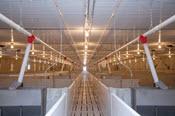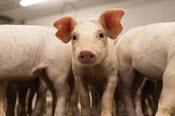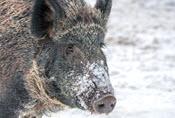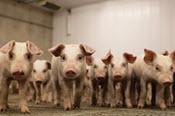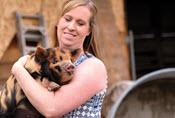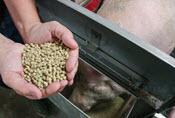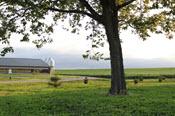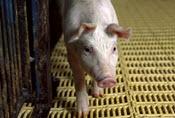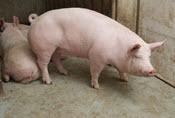Better Pork is published bimonthly. After each edition is published, we share two feature articles online. Each magazine includes much more content. If you enjoy reading the Better Pork articles below, be sure to subscribe to the magazine!
By setting SMART goals, producers can grow business success and realize personal satisfaction.
by Jackie Clark
Producers are always thinking about the future. As we move from one season to the next, our thoughts shift from the activities behind us to the opportunities available in the future. Often, people might take a moment to think of, or even record, a few resolutions for the future.
Your goals can focus on the farm business but can also be personal or family-related.
Entering the nursery can be a stressful period for young pigs. Industry experts provide insight on how to get your herd off to a strong start.
By Kate Ayers
Meeting new people, trying new food, and exploring a new destination can be exciting but daunting experiences that we encounter. Now imagine combining all three experiences into one day.
Escaped pigs have managed to hybridize and proliferate in Canada, with disastrous consequences for agriculture.
by Jackie Clark
Bob Brickley first encountered wild pigs two decades ago. He farms in southeast Saskatchewan, growing grain, raising cattle and keeping a large purebred-based quarter-horse herd.
“About 20 years ago, some pigs escaped from a domestic farm and started invading our premises and upsetting our whole operation,” he tells Better Pork.
Producers should test their water sources regularly, ensure adequate water flow, and consider water treatment options to support herd performance.
by Kate Ayers
To help optimize production, pig farmers focus on the details.
Producers manage controllable factors to the best of their abilities and provide excellent care for their animals. Producers maintain comfortable stocking densities, supply their herds with expert-formulated diets and even provide enrichment materials.
As more small-lot producers contribute to the amount of pork raised in Canada, a lack of biosecurity awareness threatens the broader industry.
by Jackie Clark
At first glance, commercial pork producers might not easily identify the similarities between their operations and the farms of non-commercial or small-lot producers.
Producers can increase operational resiliency by identifying key performance indicators and tracking improvements over time.
By Kate Ayers
Although benchmarking is a familiar concept in pork production, we still have significant opportunities to maximize the benefits of this data collection and analysis strategy, some industry experts say.
Producers can further optimize their operations by digging deeper into their data and using all information to its full potential.
Pig farmers can adjust their feeding strategies to save money during short-term market disturbances, and to support long-term profitability.
by Jackie Clark
Hog farmers have persevered through uncertain and difficult times in the industry. Economic downturns, volatile markets and increasing input prices can shift the cost of producing pigs close to, or even higher than, their market value.
The application of strong management strategies beginning at farrowing can help build a solid foundation for your herd.
by Kate Ayers
As stakeholders throughout the swine industry continue their quest to optimize production and balance sheets, farmers should closely examine their gilt development programs.
Better Pork explores some of the ways that pigs have contributed to biomedical research, and how scientists’ use of these animals may support new medical advances.
by Jackie Clark
In the spring, a team of researchers – including University of Illinois at Urbana-Champaign scientists and industry partners – approached a professor in the university’s animal sciences department to collaborate on a project intended to help address the COVID-19 crisis.
As summer’s hot temperatures approach, farmers should enact preventive measures to maintain sow performance.
by Kate Ayers
Many people happily welcome the summer sun and heat because they think of time spent outdoors swimming, playing and lounging. While farmers also embrace the sun and heat to support field crop and forage development, the summer also brings some livestock management challenges. For hog farmers, seasonal infertility can be a costly consequence of higher temperatures outside and inside barns.



